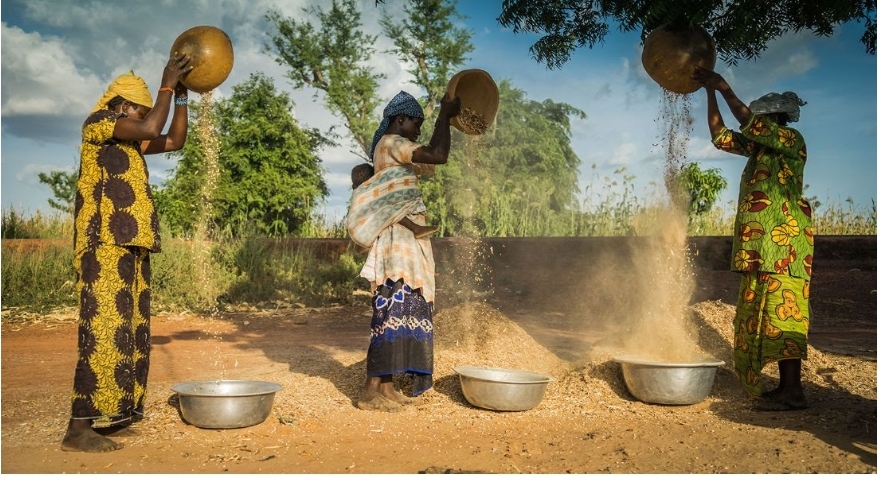The effects of global warming are already being felt across the world, and they threaten to greatly worsen in the coming decades. The primary cause of global warming is the massive amount of greenhouse gases, especially carbon dioxide, being released into the Earth’s atmosphere by human activities like burning fossil fuels. These gases trap more of the sun’s heat within the atmosphere, raising global temperatures.
Impacts on Weather Patterns
Higher global temperatures are causing noticeable changes to weather and climate patterns around the world. Some areas are seeing increased rainfall leading to flooding, while other places are enduring more droughts and wildfires due to hotter and drier conditions.
The Intergovernmental Panel on Climate Change (IPCC) projects that we are likely to see more category 4 and 5 hurricanes and tropical storms as ocean temperatures rise. Heat waves will also become more frequent, intense, and longer-lasting. Heavy rainfall events will increase globally, meaning more potential for catastrophic flooding.
Melting of Polar Ice and Sea Level Rise
One of the most visually dramatic effects of global warming can be seen in the polar regions, where ice sheets and glaciers are rapidly shrinking in area and thickness. For example, the Arctic sea ice extent in September – when it hits its annual minimum – has declined by about 40% since 1979 according to satellite measurements.
The massive ice sheets of Greenland and Antarctica are losing hundreds of billions of tons of ice each year. Altogether, the world’s ice sheets contain enough water to raise global sea levels by over 200 feet. As they melt in a warming world, sea levels are already rising at an accelerating rate, increasing the risks of coastal flooding.
Threats to Ecosystems and Biodiversity
Global warming threatens ecosystems and species in a variety of ways. As climate zones shift, many plants and animals will need to adapt and migrate to more suitable habitats. Some species will be at greater risk of extinction if they cannot adapt quickly enough.
Warming ocean waters are causing coral bleaching events to become more frequent and more severe, killing coral reefs around the world. Ocean acidification from higher CO2 levels also harms corals and shellfish species. Other marine ecosystems are under threat from the loss of sea ice habitat.
On land, warming temperatures and changing rainfall patterns may alter forest composition as tree species shift their ranges. Increased risk of drought, wildfires, floods, and pest outbreaks also threaten many ecosystems. High levels of habitat loss and fragmentation make it harder for species to shift and adapt.
Impacts on Oceans
The world’s oceans absorb over 90% of the excess heat trapped by greenhouse gases, leading to rising ocean temperatures. Warming oceans hold less oxygen, which can create dead zones. Acidification from higher CO2 harms shellfish, corals, and plankton at the base of the ocean food chain.
Higher ocean temperatures also drive more intense tropical storms, contributing to sea level rise from thermal expansion, and threaten marine ecosystems through heat waves, coral bleaching, and loss of sea ice habitat. Declining Arctic sea ice changes ocean circulation patterns too.
Public Health Effects
The changing climate is posing growing risks to public health around the globe. Rising temperatures expand the ranges of disease-carrying mosquitoes and ticks, exposing more people to illnesses like malaria, dengue fever, Lyme disease, and West Nile virus. Longer and more intense heat waves lead to more heat stroke and heart attacks.
Increasingly extreme weather disasters like floods, droughts, and wildfires also claim lives and cause injuries, while damaging healthcare infrastructure. Higher levels of air pollution, pollen, and mold exacerbate respiratory conditions such as asthma. Food and water supplies are threatened too, increasing risks of malnutrition and waterborne illness.
National Security Implications
The effects of climate change present serious challenges to national security as well. Sea level rise, extreme storms, flooding, droughts, and heat waves threaten coastal military bases and disrupt supply chains. Climate impacts increase the potential for instability and conflict around the world by exacerbating resource scarcity, poverty, food shortages, and migration pressures.
The warming Arctic is opening up new operational areas and shipping routes, requiring more military and coast guard resources. Civil unrest may increase with climate disasters. The U.S. Department of Defense calls climate change a “threat multiplier” and the military is developing strategies to manage these escalating risks.
Economic Costs
Severe storms, flooding, heat waves, droughts and wildfires all take a heavy toll on the economy, costing billions in disaster relief, infrastructure damage and lost productivity. Sea level rise and extreme weather threaten valuable coastal real estate and infrastructure. Climate change impacts on water supplies, agriculture, fisheries and human health will ripple through the economy too.
If greenhouse gas emissions continue to rise, the economic costs in the U.S. could reach hundreds of billions per year by late this century, according to the U.S. National Climate Assessment. The costs of inaction far outweigh investments to curb emissions and build resilience. Delays will only make climate change impacts more severe.
Mitigation Efforts Needed
To avoid the most dangerous climate change scenarios, societies around the world must work aggressively to reduce greenhouse gas emissions. This involves rapidly transitioning from fossil fuels to clean, renewable energy sources like solar, wind and geothermal. Stronger efficiency standards, electrification of vehicles, and developing technologies like carbon capture can also curb emissions.
Planting trees, improving soil health and better forest management can enhance natural carbon sinks. Individuals can help by driving and flying less, switching to renewable power, using more public transit, and reducing energy waste at home. But ultimately larger scale changes in energy policy, infrastructure and technology are essential to put emissions into a steep decline.
Building Resilience and Adapting
Even as emissions are reduced, it is crucial that communities also increase their resilience to the climate change impacts that are already unfolding. Constructing seawalls and elevating buildings can help protect against sea level rise and stronger storms. Improving drainage systems and green infrastructure can better manage heavy rainfall.
Updating building codes, utility grids and transportation networks to withstand extreme heat and severe weather is also important. Diversifying water supply options and implementing drought and wildfire plans saves lives. Assisting the most vulnerable populations is imperative for equity too. Ecosystem restoration and corridors help nature adapt. Early warning systems and emergency preparedness planning save lives.
The effects of global warming clearly present an existential threat, with the potential to drastically damage economies, ecosystems, infrastructure and public health worldwide. But with immediate, cooperative action to mitigate emissions and enhance resilience, the worst climate change impacts can still be avoided or reduced. There is still time to safeguard our future, but the window for action is closing fast.
climate journal








